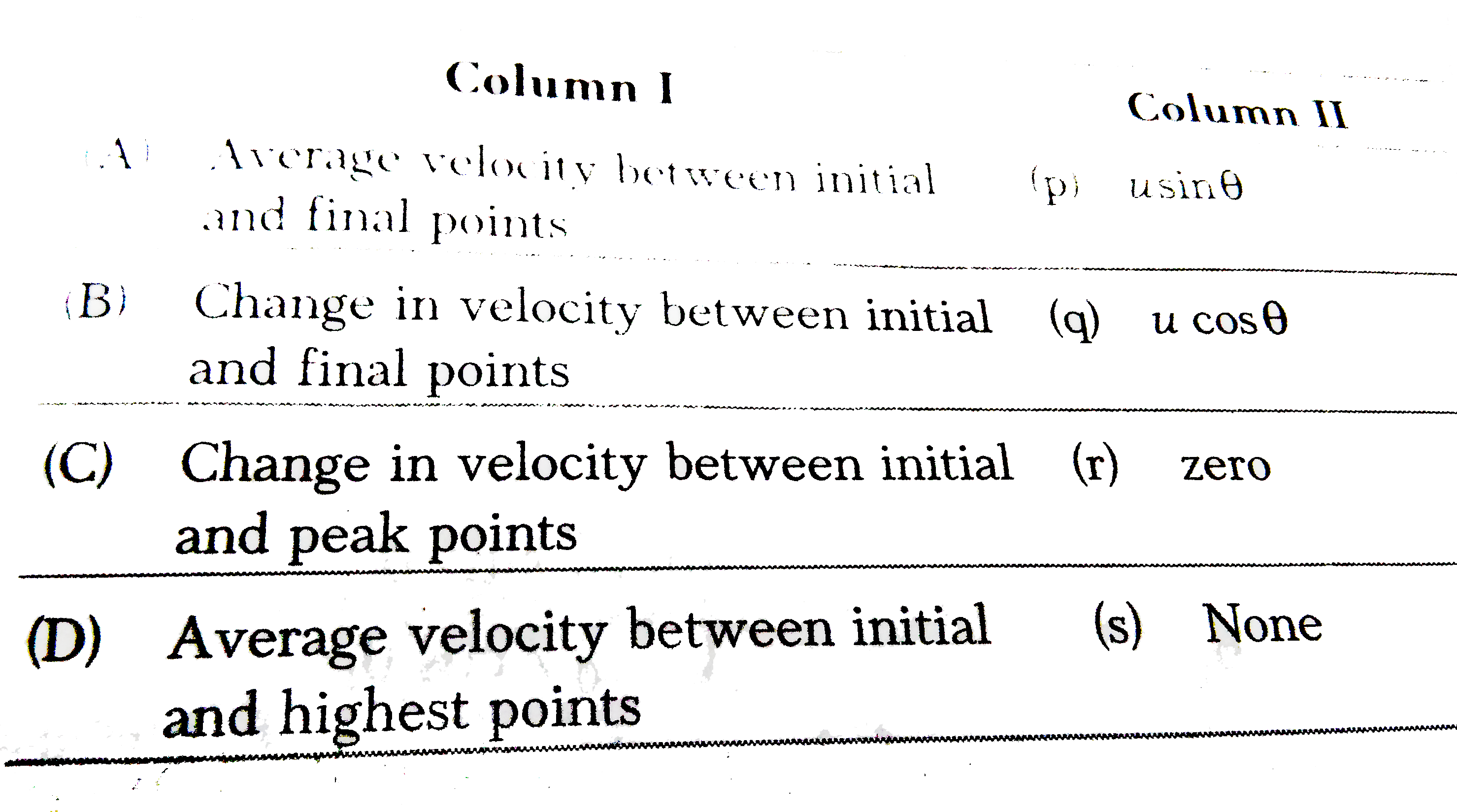A particle is projected with an angle of projection θ to the horizontal line passing through the points (P,Q) and (Q,P) referred to horizontal and vertical axes (can be treated as X-axis and Y-axis respectively). The angle of projection can be given by
tan2[P2+PQ+Q2PQ]
tan−1[P2+Q2−PQPQ]
tan−1[P2+Q22PQ]
sin−1[P2+Q2+PQ2PQ]
The correct Answer is:A
To solve the problem, we need to find the angle of projection θ of a particle projected through the points (P,Q) and (Q,P). We will use the equations of projectile motion to derive the angle of projection.
1. Understanding the Problem:
We have two points: (P,Q) and (Q,P). We can treat these as coordinates in a Cartesian plane, where P is along the x-axis and Q is along the y-axis.
2. Equation of Trajectory:
The equation of the trajectory of a projectile is given by:
y=xtanθ−g2v2cos2θx2
where g is the acceleration due to gravity, v is the initial velocity, and θ is the angle of projection.
3. Using the Points:
For the point (P,Q):
Q=Ptanθ−g2v2cos2θP2(Equation 1)
For the point (Q,P):
P=Qtanθ−g2v2cos2θQ2(Equation 2)
4. Dividing the Equations:
Divide Equation 1 by Equation 2:
QP=Ptanθ−g2v2cos2θP2Qtanθ−g2v2cos2θQ2
5. Cross Multiplying:
Cross-multiply to simplify:
Q(Qtanθ−g2v2cos2θQ2)=P(Ptanθ−g2v2cos2θP2)
6. Rearranging:
Rearranging gives us:
Q2tanθ−g2v2cos2θQ3=P2tanθ−g2v2cos2θP3
7. Isolating tanθ:
Rearranging terms to isolate tanθ:
(Q2−P2)tanθ=g2v2cos2θ(P3−Q3)
8. Using the Identity:
Using the identity P3−Q3=(P−Q)(P2+PQ+Q2):
(Q2−P2)tanθ=g2v2cos2θ(P−Q)(P2+PQ+Q2)
9. Final Expression for tanθ:
Solving for tanθ:
tanθ=g(P−Q)(P2+PQ+Q2)2v2cos2θ(Q2−P2)
10. Conclusion:
The angle of projection θ can be expressed as:
θ=tan−1(g(P−Q)(P2+PQ+Q2)2v2cos2θ(Q2−P2))
We have two points: (P,Q) and (Q,P). We can treat these as coordinates in a Cartesian plane, where P is along the x-axis and Q is along the y-axis.
The equation of the trajectory of a projectile is given by:
y=xtanθ−g2v2cos2θx2
where g is the acceleration due to gravity, v is the initial velocity, and θ is the angle of projection.
For the point (P,Q):
Q=Ptanθ−g2v2cos2θP2(Equation 1)
For the point (Q,P):
P=Qtanθ−g2v2cos2θQ2(Equation 2)
Divide Equation 1 by Equation 2:
QP=Ptanθ−g2v2cos2θP2Qtanθ−g2v2cos2θQ2
Cross-multiply to simplify:
Q(Qtanθ−g2v2cos2θQ2)=P(Ptanθ−g2v2cos2θP2)
Rearranging gives us:
Q2tanθ−g2v2cos2θQ3=P2tanθ−g2v2cos2θP3
Rearranging terms to isolate tanθ:
(Q2−P2)tanθ=g2v2cos2θ(P3−Q3)
Using the identity P3−Q3=(P−Q)(P2+PQ+Q2):
(Q2−P2)tanθ=g2v2cos2θ(P−Q)(P2+PQ+Q2)
Solving for tanθ:
tanθ=g(P−Q)(P2+PQ+Q2)2v2cos2θ(Q2−P2)
The angle of projection θ can be expressed as:
θ=tan−1(g(P−Q)(P2+PQ+Q2)2v2cos2θ(Q2−P2))
Similar Questions
Knowledge Check
If a body is projected with an angle θ to the horizontal, then
Aits velocity is always perpendicular to its acceleration thenBits velocity becomes zero at its maximum height.Cits velocity makes zero angle with the horizontal at its maximum height.Dthe body just before hitting the ground, the direction of velocity coincides with the acceleration.
A particle projected atv a definite angle ∝ to the horizontal passes through points (a,b)and(b,a), referred to horizontal and vertical axes through the points of projection. Show that :
(a) The horizontal range R=a2+ab+b2a+b .
(b) The angle of projection ∝ is given by
tan−1[a2+ab+b2ab].
View SolutionTwo particles are projected with same velocity but at angles of projection 25° and 65° with horizontal. The ratio of their horizontal ranges is
View SolutionA particle is projected at an angle θ from the horizontal with kinetic energy (T). What is the kinetic energy of the particle at the highest point ?
View SolutionTwo particles are projected with same velocity but at angles of projection 35° and 55°. Then their horizontal ranges are in the ratio of
View SolutionA particle is projected form ground with velocity u ar angle θ from horizontal. Match the following two columns.

View SolutionA particle is projected under gravity at an angle of projection 45∘ with horizontal. Its horizontal range is 36m. Find maximum Height attained by particle.
View SolutionA particle is projected with a speed v at an angle θ with the horizontal. Find the mean power delivered by gravity during the ascent of the particle.
View Solution
